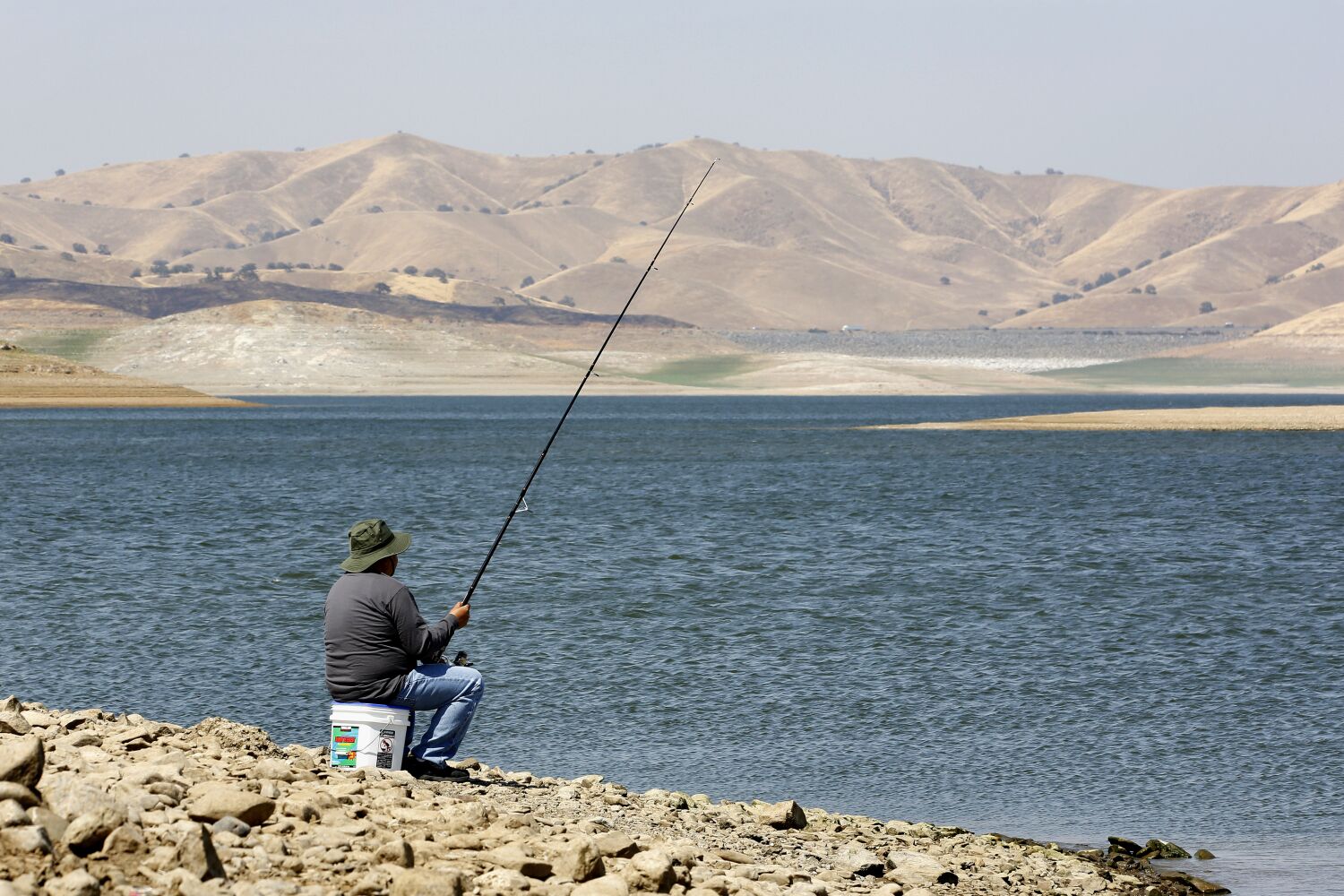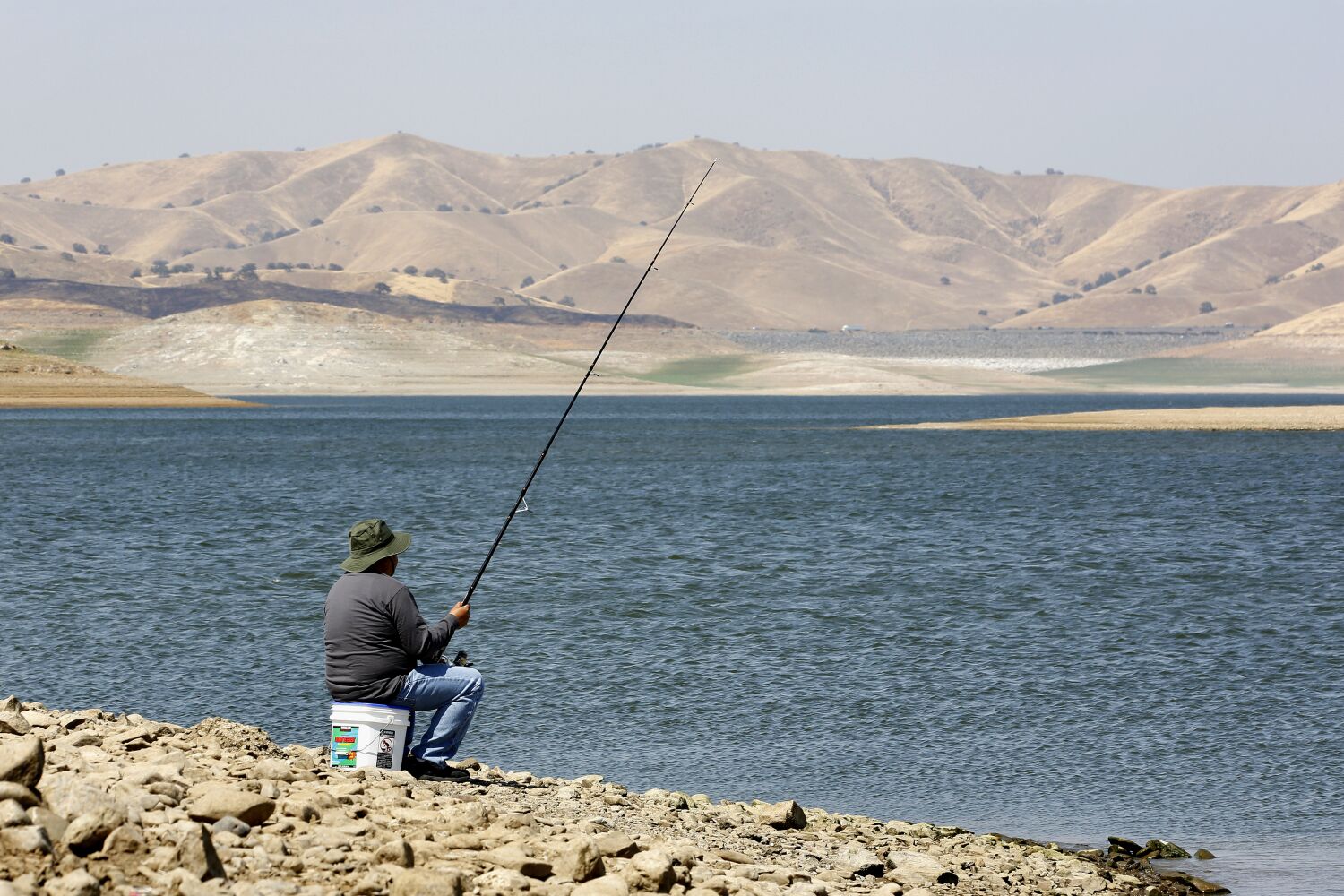
[ad_1]

California’s reservoirs have been within the highlight following months of precipitation and the finish of the drought in a lot of the state.
A surplus of water has crammed a number of main reservoirs, which had seen perilously low water ranges.
Amongst them is the San Luis Reservoir, which sat at simply one-quarter of its capability on Dec. 1. The basin is now 98% full.
The reservoir, California’s fifth-largest, is positioned close to Los Banos in Merced County and provides water to the State Water Undertaking. After a surprising turnaround, it sits at 114% of its historic common degree.
The picture on the left exhibits San Luis Reservoir on March 20, 2022, when its water degree was properly underneath half of capability. On the correct, the reservoir misplaced water much more by July 13 as hotter climate dried out the panorama.
The reservoir continued to lose water by the summer time and fall, in the end settling at round 25% of capability by November and December.
A 12 months earlier, earlier than meager winter rains, the San Luis Reservoir had dropped to a staggering 10% of capability in November 2021.
However this 12 months has been a special story.
Atmospheric rivers have delivered unimaginable quantities of rain and snow, bringing document snowpack within the Sierra, the resurrection of Lake Oroville and harmful flooding throughout the state.
The picture on the left is similar as above — San Luis Reservoir on July 13, 2022. Against this, the picture on the correct from March 25, exhibits how the panorama has been reworked from brown to inexperienced, and the water degree has risen considerably.
A lot of the state’s reservoirs are actually at or above their historic common ranges.
As of March 28, state reservoirs stood at about 73% capability, above the 30-year common of 69% for the month of March.
[ad_2]
Supply hyperlink
https://classifiedsmarketing.com/today-news/before-and-after-photos-of-californias-san-luis-reservoir/?feed_id=122769&_unique_id=642b80b9cb6e3


